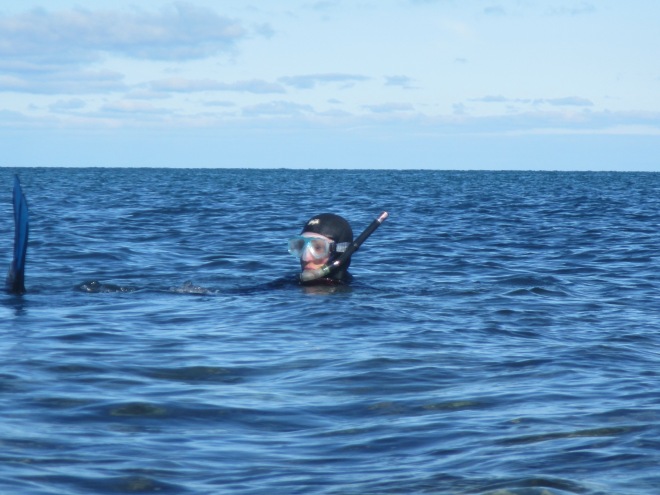It’s cold morning on the beach. NO; that’s a lie. It’s a freezing morning on the beach. After a night of crystal clear skies, there’s no wind and the sea is mirror smooth. It’s so cold even the sand feels stiff and frozen.
I’m not normally found paddling around areas at the northern reaches of Spencer Gulf but these are not normal times. The cold fronts have been pushing across southern Australia bringing big seas to the Southern Ocean so I have moved inland a few hundred kilometres. South Australians have been let off the COVID leash, with no infections for around 2 weeks, we are allowed to travel intrastate.
Sometimes you can pull up at a nice lunch spot on the edge of the mangroves and find that after sandwiches and coffee you have a problem. In nautical terms it’s said to be “aground”. A bit of pushing and shoving gets you back on the ocean.
The water is cold and clear as you glide along alone. It’s these times that I sometimes wonder “What lurks below ?”. I often see dolphins, fur seals and sea lions as well as several species of water diving cormorants, but today I’m sure of seeing the Australian Giant Cuttlefish. I come in close to shore at the prearranged place so that Robyn can get some photos.
Now being our group photographer, she has not only has to be a fair paddler but also ready to make sacrifices to get good shots. Into the freezing water she goes looking for photo opportunities.
Here’s a slide show of the congregation of Australian Giant Cuttlefish as they come into the cold, shallow waters of Pt Lowly to mate. They grow up to 60 cm weighing around 5kg. and have the ability to change colour and texture to camoflague themselves.
Unfortunately we are not travelling with Gavin, our group Sommelier, which limited our choice of wine, but I was able to temp her with a decent Pinot Noir as reward for her work.
Luckily we didn’t come across anything more sinister than Giant Cuttlefish which more than can be said for well known S.A. paddler Mike Dunn. You can see his “encounter” in the video below.
Stay safe. Social distance and wash your hands.
Ian and Robyn







